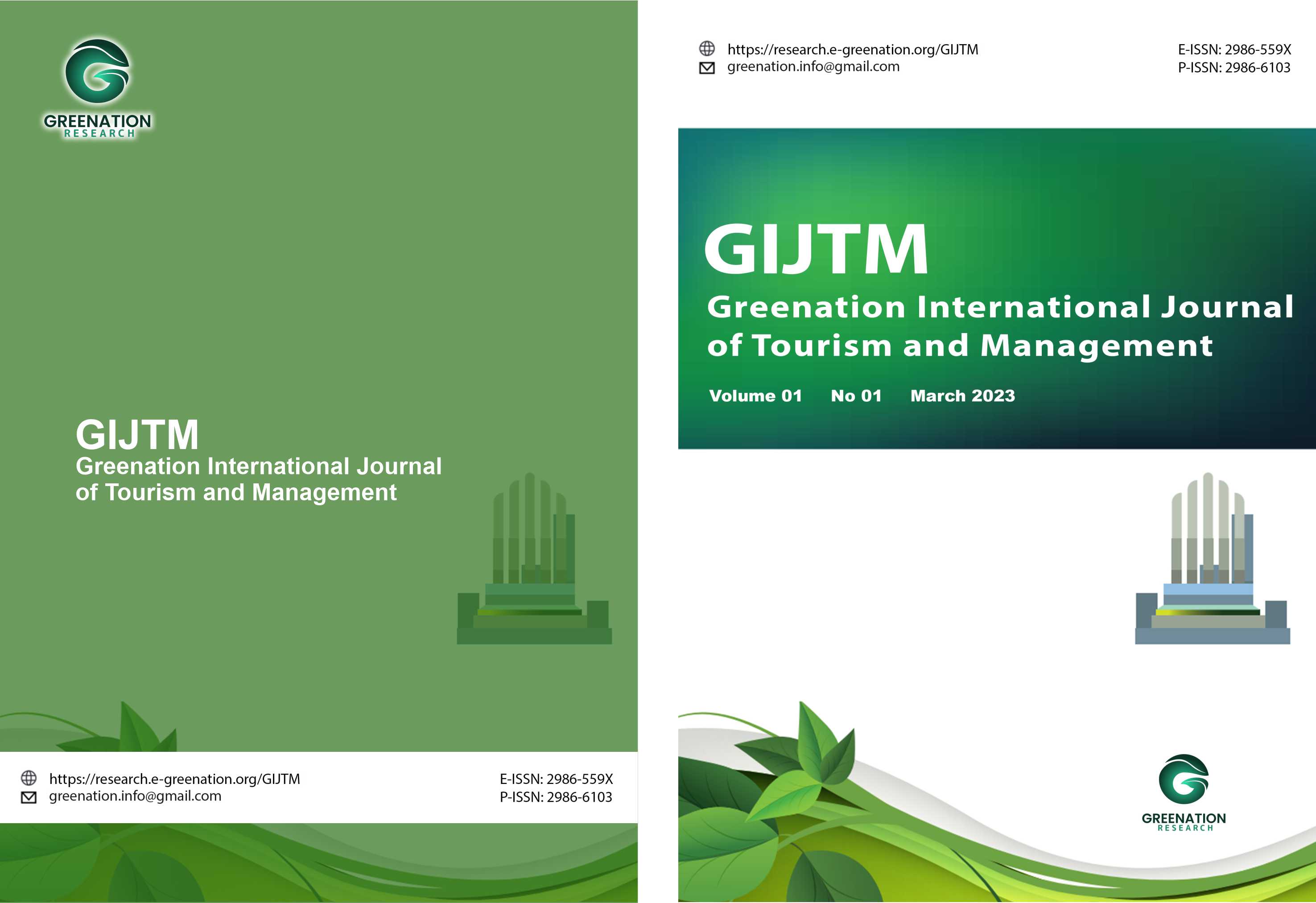Consumer Preferences and Demographic Influences on Watch Ownership: A Study on Wearable Technology Trends
DOI:
https://doi.org/10.38035/gijtm.v3i2.309Keywords:
Watch Ownership, Consumer Preferences, Wearable Technology, Demographic AnalysisAbstract
This study examines the watch ownership patterns, preferences, and usage habits among individuals in Ahmedabad, with a focus on demographic factors such as age and gender. Using a sample of 106 respondents, data were analyzed to explore correlations between demographic characteristics and preferences for various watch types, including traditional, digital, and smartwatches. Results indicate that younger respondents, particularly those aged 18-25, show a strong preference for digital and smartwatches due to their multifunctional capabilities. Gender did not significantly impact watch ownership or type preference, suggesting a broadly inclusive appeal across demographics. This research highlights the shift toward multifunctional wearable technology and offers insights into the future scope of the wearables market, which is poised for further growth and adaptation. The findings contribute to a better understanding of consumer trends in wearable devices, particularly in the context of changing technological and lifestyle demands.
References
Ali, C., Schmidt, T. R., Radcliffe, D., & Donald, R. (2019). The Digital Life of Small Market Newspapers. Digital Journalism, 7(7), 886–909. https://doi.org/10.1080/21670811.2018.1513810
Angeles, L. C. (n.d.). Persistent racialized commodification amidst technological innovation: exceptionalist Filipina bride representations from analogy to digital. Feminist Media Studies, 1–21. https://doi.org/10.1080/14680777.2023.2263657
Bach, S. (2008). On Digital Consciousness and Psychic Death. Psychoanalytic Dialogues, 18(6), 784–794. https://doi.org/10.1080/10481880802473290
Barber, J. F. (2016). Digital storytelling: New opportunities for humanities scholarship and pedagogy. Cogent Arts & Humanities, 3(1), 1181037. https://doi.org/10.1080/23311983.2016.1181037
Bhattacharya, N. (2004). A ‘Basement’ Canophilia. Indian Diaspora women watch Bollywood. South Asian Popular Culture, 2(2), 161–183. https://doi.org/10.1080/1474668042000275734
Boring, R. L., Ulrich, T. A., Lew, R., Kovesdi, C. R., & al Rashdan, A. (2019). A Comparison Study of Operator Preference and Performance for Analog Versus Digital Turbine Control Systems in Control Room Modernization. Nuclear Technology, 205(4), 507–523. https://doi.org/10.1080/00295450.2018.1509593
Cabrera Paz, J., & Schwartz, translated by M. (2009). Techno-Cultural Convergence: Wanting to Say Everything, Wanting to Watch Everything. Popular Communication, 7(3), 130–139. https://doi.org/10.1080/15405700903023244
Constable, M. (2015). The analogue and the digital head-death. Visual Studies, 30(1), 68–78. https://doi.org/10.1080/1472586X.2015.996399
Culpepper, J. C. (2000). Watch Out and Listen. The Acquisitions Librarian, 12(24), 29–40. https://doi.org/10.1300/J101v12n24_04
Davidson, C. H. (2001). Technology watch in the construction sector: why and how? Building Research & Information, 29(3), 233–241. https://doi.org/10.1080/09613210010027756
Dawson, M. (2010). Television Between Analog and Digital. Journal of Popular Film and Television, 38(2), 95–100. https://doi.org/10.1080/01956051.2010.483361
Dellmann, S. (2019). Analogue objects online. Epistemological reflections on digital reproductions of lantern slides. Early Popular Visual Culture, 17(3–4), 322–340. https://doi.org/10.1080/17460654.2019.1667108
Donzé, P.-Y. (2015). Global value chains and the lost competitiveness of the Japanese watch industry: an applied business history of Seiko since 1990. Asia Pacific Business Review, 21(3), 295–310. https://doi.org/10.1080/13602381.2015.1020192
Donzé, P.-Y., & Borel, D. (2019). Technological Innovation and Brand Management: The Japanese Watch Industry since the 1990s. Journal of Asia-Pacific Business, 20(2), 82–101. https://doi.org/10.1080/10599231.2019.1610655
Esposito, E., & Zottola, A. (2024). Intersecting hostilities around the European migration crisis: the case of Carola Rackete and the Sea-Watch 3. Critical Discourse Studies, 21(5), 522–537. https://doi.org/10.1080/17405904.2023.2230600
František Žák, T. (2020). Building a culture of resistance: securitising and de-securitising Eastleigh during the Kenyan government’s Operation Usalama Watch. Journal of Eastern African Studies, 14(4), 743–762. https://doi.org/10.1080/17531055.2020.1831848
Gelfand, A. (2013). If We Build It (and Promote It) They Will Come: History of Analog and Digital Exhibits in Archival Repositories. Journal of Archival Organization, 11(1–2), 49–82. https://doi.org/10.1080/15332748.2013.882160
Hacking, I. (2005). The Cartesian vision fulfilled: analogue bodies and digital minds. Interdisciplinary Science Reviews, 30(2), 153–166. https://doi.org/10.1179/030801805X25963
Hand, H., Rowsell, J., & Shillitoe, M. (2022). Alone-together: intergenerational mapping of digital and analogue spaces of self. Learning, Media and Technology, 47(3), 310–327. https://doi.org/10.1080/17439884.2022.2095571
Harris, J. (2013). Digital Skin: How Developments in Digital Imaging Techniques and Culture Are Informing the Design of Futuristic Surface and Fabrication Concepts. TEXTILE, 11(3), 242–261. https://doi.org/10.2752/175183513x13793321037449
Häyhtiö, T., & Rinne, J. (2009). LITTLE BROTHERS AND SISTERS ARE WATCHING. Information, Communication & Society, 12(6), 840–859. https://doi.org/10.1080/13691180802302296
Hust, S. J. T., Wong, W. J., & Chen, Y.-C. Y. (2011). FCP and Mediation Styles: Factors Associated With Parents’ Intentions to Let Their Children Watch Violent, Sexual and Family-Oriented Television Content. Journal of Broadcasting & Electronic Media, 55(3), 380–399. https://doi.org/10.1080/08838151.2011.597465
Jetha, K., Berente, N., & King, J. L. (2017). Digital and analog logics: An analysis of the discourse on property rights and information goods. The Information Society, 33(3), 119–132. https://doi.org/10.1080/01972243.2017.1294125
Jickling, B. (2001). Environmental Thought, the Language of Sustainability, and Digital Watches. Environmental Education Research, 7(2), 167–180. https://doi.org/10.1080/13504620120043171
Kang, M.-H. (2002). Digital Cable: Exploring Factors Associated With Early Adoption. Journal of Media Economics, 15(3), 193–207. https://doi.org/10.1207/S15327736ME1503_4
Kaplon, H., & Reichert, J. M. (2018). Antibodies to watch in 2018. MAbs, 10(2), 183–203. https://doi.org/10.1080/19420862.2018.1415671
Kaplon, H., & Reichert, J. M. (2021). Antibodies to watch in 2021. MAbs, 13(1), 1860476. https://doi.org/10.1080/19420862.2020.1860476
King, L., Stark, J. F., & Cooke, P. (2016). Experiencing the Digital World: The Cultural Value of Digital Engagement with Heritage. Heritage & Society, 9(1), 76–101. https://doi.org/10.1080/2159032X.2016.1246156
Knauf, H., & Lepold, M. (2021). The children’s voice – how do children participate in analog and digital portfolios? European Early Childhood Education Research Journal, 29(5), 669–682. https://doi.org/10.1080/1350293X.2021.1906291
Lindeberg, S., Zarén, C., Hydén, L.-C., & Samuelsson, C. (n.d.). Digital or analogue communication supports - does it matter? Educational Gerontology, 1–11. https://doi.org/10.1080/03601277.2024.2384618
Löfgren, O. (2014). Routinising research: academic skills in analogue and digital worlds. International Journal of Social Research Methodology, 17(1), 73–86. https://doi.org/10.1080/13645579.2014.854022
Mackay, H. (2007). ANALOGUE SWITCH?OFF. International Journal of Cultural Policy, 13(1), 33–48. https://doi.org/10.1080/10286630701201673
McCarthy, J. K. (2023). 3D Digital Libraries for Maritime Archaeology: 17th- and 18th-Century Dutch Ocean-Going Merchant Ships. International Journal of Nautical Archaeology, 52(2), 418–438. https://doi.org/10.1080/10572414.2023.2207741
McMillan, S. J., Avery, E. J., & Macias, W. (2008). FROM HAVE NOTS TO WATCH DOGS. Information, Communication & Society, 11(5), 675–697. https://doi.org/10.1080/13691180802126745
Menger, L., Vacchelli, E., Kepp, O., Eggermont, A., Tartour, E., Zitvogel, L., Kroemer, G., & Galluzzi, L. (2013). Trial watch. OncoImmunology, 2(2), e23082. https://doi.org/10.4161/onci.23082
NES, F. L. V. A. N. (1972). Determining Temporal Differences with Analogue and Digital Time Displays. Ergonomics, 15(1), 73–79. https://doi.org/10.1080/00140137208924409
Neustetter, M. (2009). Analogue and Digital Anecdotes and Artworks from South Africa. Third Text, 23(3), 323–334. https://doi.org/10.1080/09528820902954952
Nilsen, M., Lundin, M., Wallerstedt, C., & Pramling, N. (2021). Evolving and re-mediated activities when preschool children play analogue and digital Memory games. Early Years, 41(2–3), 232–247. https://doi.org/10.1080/09575146.2018.1460803
Noll, A. M. (1998). The Digital Mystique: A Review of Digital Technology and its Application to Television. Prometheus, 16(2), 145–153. https://doi.org/10.1080/08109029808629271
Omeleze, S., & Venter, H. S. (2019). Digital forensic application requirements specification process. Australian Journal of Forensic Sciences, 51(4), 371–394. https://doi.org/10.1080/00450618.2017.1374456
Rice, P., Upasham, S., Jagannath, B., Manuel, R., Pali, M., & Prasad, S. (2019). CortiWatch: Watch-Based Cortisol Tracker. Future Science OA, 5(9), FSO416. https://doi.org/10.2144/fsoa-2019-0061
Richmond, O. P., & Tellidis, I. (2020). Analogue crisis, digital renewal? Current dilemmas of peacebuilding. Globalizations, 17(6), 935–952. https://doi.org/10.1080/14747731.2020.1712169
Rippey, B. (2006). Weather Watch. Weatherwise, 59(2), 64–75. https://doi.org/10.3200/WEWI.59.2.64-75
Ritchie, L. (2013). Navigating the site map: From analogue to digital space. International Journal of Performance Arts and Digital Media, 9(1), 197–215. https://doi.org/10.1386/padm.9.1.197_1
Rosa, T., & Fernandes, C. (2021). Lab Brazil: Parquear Bando digital annotation: on digital scores for collective performance interventions in public spaces. International Journal of Performance Arts and Digital Media, 17(1), 56–68. https://doi.org/10.1080/14794713.2021.1885191
Sanders, M., & van de Vrande, V. (2024). Value creation in interdependent digital and analogue markets. Journal of Media Business Studies, 21(2), 146–174. https://doi.org/10.1080/16522354.2023.2300195
van Holstein, E. (2018). Digital geographies of grassroots securitisation. Social & Cultural Geography, 19(8), 1097–1105. https://doi.org/10.1080/14649365.2018.1446217
Webster, N. A. (n.d.). Storytelling as connectivity: expanding the digital geographies of the gig economy. Social & Cultural Geography, 1–19. https://doi.org/10.1080/14649365.2024.2367417
Downloads
Published
How to Cite
Issue
Section
License
Copyright (c) 2024 Hitesh Makhija, Hussain Bohra, Dhruv Seth, Meet Mehta, Rahul Chauhan, Andino Maseleno

This work is licensed under a Creative Commons Attribution 4.0 International License.
Copyright :
Authors who publish their manuscripts in this journal agree to the following conditions:
- Copyright in each article belongs to the author.
- The author acknowledges that the Greenation International Journal of Tourism and Management (GIJTM) has the right to be the first to publish under a Creative Commons Attribution 4.0 International license (Attribution 4.0 International CC BY 4.0).
- Authors can submit articles separately, arrange the non-exclusive distribution of manuscripts that have been published in this journal to other versions (for example, sent to the author's institutional repository, publication in a book, etc.), by acknowledging that the manuscript has been published for the first time at GIJTM.


























